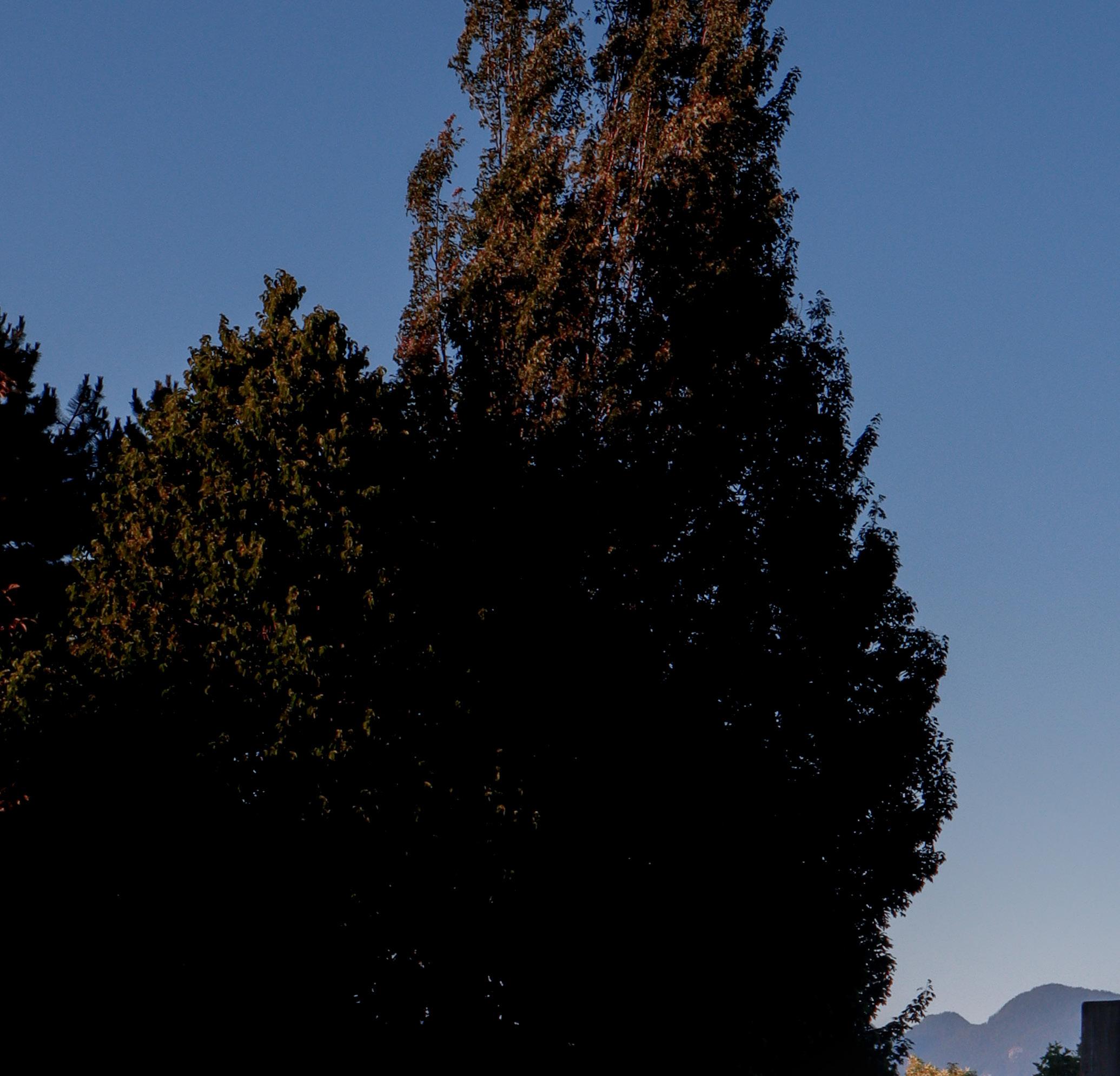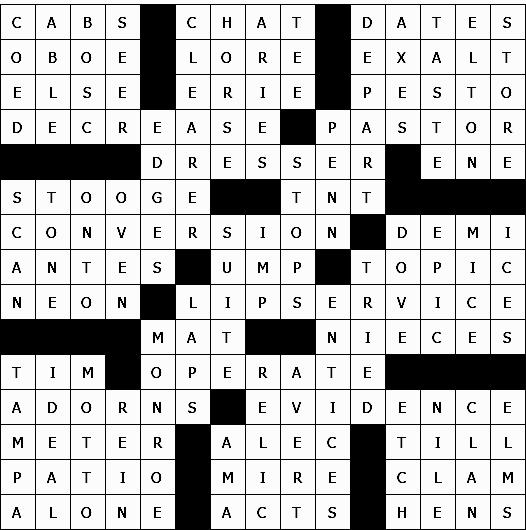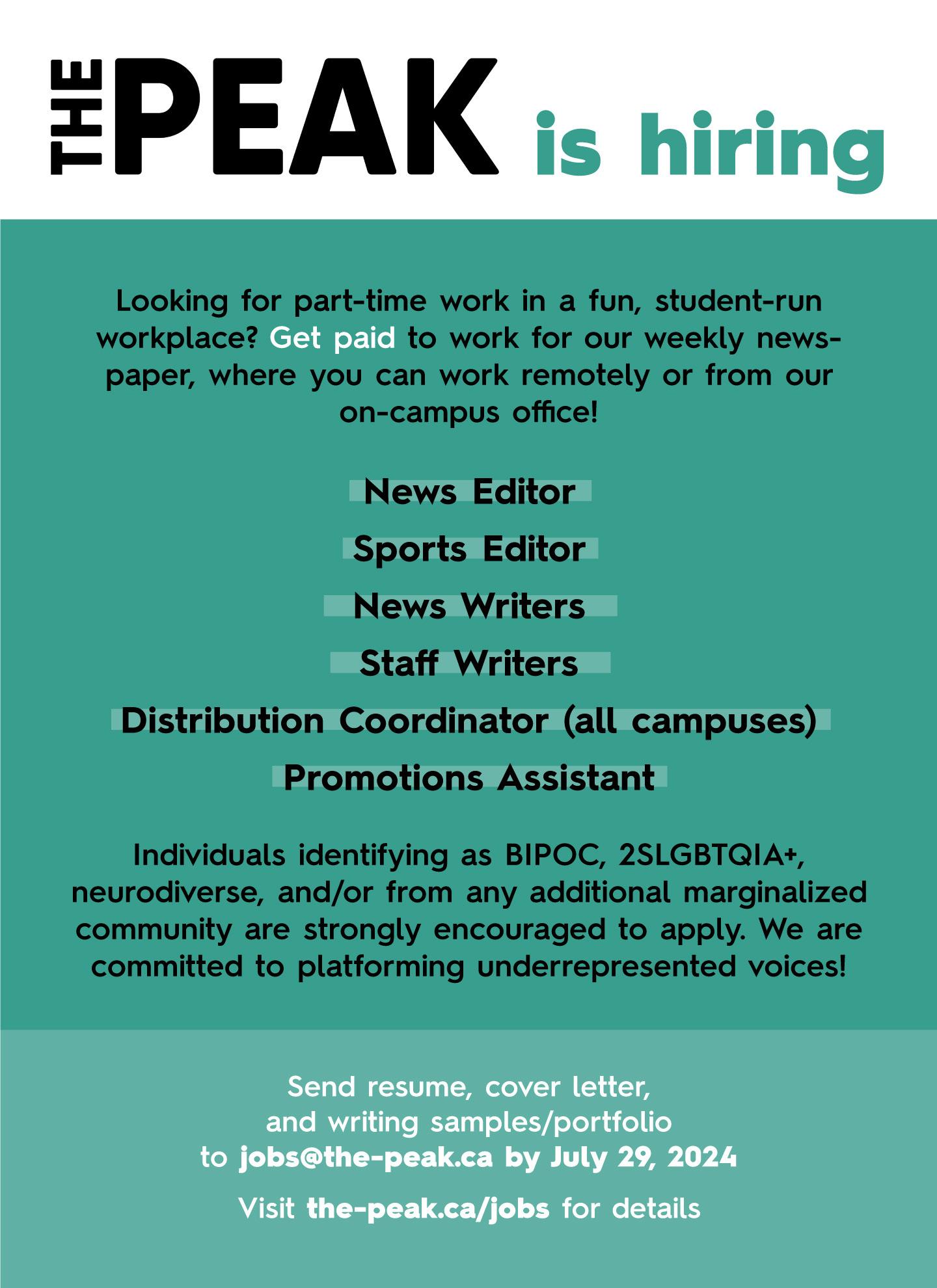















EDITOR-IN-CHIEF
Petra Chase eic@the-peak.ca
COPY EDITOR
Michelle Young copy@the-peak.ca
FACT CHECKER
Karly Burns factchecker@the-peak.ca
NEWS EDITOR Karissa Ketter news@the-peak.ca
NEWS WRITER
Hannah Fraser
OPINIONS EDITOR
Olivia Visser opinions@the-peak.ca
FEATURES EDITOR
Daniel Salcedo Rubio features@the-peak.ca
ARTS & CULTURE EDITOR
Izzy Cheung arts@the-peak.ca
HUMOUR EDITOR
C Icart humour@the-peak.ca
BUSINESS MANAGER
Yuri Zhou
business@the-peak.ca (778) 782-3598
STAFF WRITERS
Kaja Antic, Hailey Miller, and Yasmin Hassan
PROMOTIONS MANAGER
Juliana Manalo promotions@the-peak.ca
PRODUCTION & DESIGN EDITOR Abbey Perley production@the-peak.ca
ASSISTANT PRODUCTION EDITORS Minh Duc Ngo and Josh Ralla
PHOTO EDITOR
Gudrun Wai-Gunnarsson photos@the-peak.ca
WEB MANAGER
Subaig Bindra web@the-peak.ca
MULTIMEDIA EDITOR Emma Ciprian
BOARD OF DIRECTORS
Emma Jean, Payal Raj, Olivia Visser, and Yuri Zhou
PEAK ASSOCIATES
Amirul Anirban, Amrit Kamaal, Andrea Choi, Cliff Ebora, Sonya Janeshewski, Aliya Nourlan, and Angela Shen
COVER ARTWORK Victoria Lo
The Peak MBC2900 8888 university Dr. Burnaby, BC V5A 1S6 (778) 782-5110


Follow us on Instagram, at @thepeakatsfu and check out our YouTube channel, The Peak (SFU).
READ THE PEAK
Find extended and cited articles at the-peak.ca Download digital issues at issuu.com/peaksfu
The Peak is the official weekly student newspaper of SFU and is published every Monday. We’re funded by a student levy and governed by a Board of Directors. Any SFU student can apply to become a writer or editor.
We reserve the right to edit submissions for length, as well as style, grammar, and legality. We also reserve the right to reprint submissions at any time, both in print and on web. We will not publish content that is sexist, racist, or otherwise prejudiced.
We acknowledge that The Peak’s office is located and our paper is produced, distributed, and read on the Unceded Coast Salish Territories of the xwməθkwəy̓əm (Musqueam), səlilwətaɬ (TsleilWaututh), Kwikwitlem (Coquitlam), Kwantlen, Katzie, Semiahmoo, and Skwxwú7mesh (Squamish) Peoples. Unceded means that this land was never surrendered, relinquished, or handed over in any way. We recognize that the unceded land that we occupy includes not only the SFU Burnaby campus, but extends to the land occupied by the Vancouver and Surrey campuses as well.
There are reports of park rangers increasing heavy-handed enforcement

Content warning: description of police violence.
According to local advocates, “The Vancouver Park Board is creating a daily exclusive ‘work-zone’ around the encampment at CRAB Park, preventing volunteers and media from entering.” The work zone has been established since the week of June 10, amidst ongoing street sweeps happening across Vancouver for years. Recent escalations have involved park rangers dismantling residents’ homes and seizing their belongings, following Park Board bylaws newly established in April. These bylaws say CRAB Park residents are permitted to shelter there overnight but must take down their shelters in the morning by 7:00 a.m. unless they’re in the designated area, which is scaled to fit 14 residents.
Items park rangers have confiscated include “blankets, clothing, tarps, potted plants, a memorial wreath, spice rack, and first aid supplies to a dog’s water bowl and cultural carving tools,” said local advocates in a press release. “They open or enter tents without a 24-hour written notice, and residents have been threatened with eviction if they swear.”
Local advocates report that “rangers have become increasingly heavy-handed in enforcing [the] new set of bylaws,” now introducing daily work zones. Three CRAB Park advocates said they have been shoved by police or rangers, with one volunteer stating they were pushed by an officer telling them to “move back or we do this another way.”
Another volunteer recounted their experience on June 13: “I moved to where [the police officer] gestured . . . But he got
in my face, his lip curled, he snarled, ‘You just want to make trouble,’ and grabbed my arm and shoved me toward a different set of garbage bins.”
The Peak corresponded with Fiona York, a volunteer and advocate for CRAB Park residents, for more information on the ongoing street sweeps. York noted park rangers have also tried to seize a volunteer’s bike. The volunteer had to get on the bike while the rangers tried to pull it from her so she could keep it.
They just don’t want that visibility of homelessness, the visible poverty. They’re just wanting to sweep that away.
FIONA YORK ADVOCATE FOR CRAB PARK RESIDENTS
York expressed she encountered “one of the most horrifying things” at the street sweeps — rangers seizing “a memorial wreath for one of the residents who had passed away.” The recent work zone prevents volunteers from intervening in incidents like this and standing up for park residents.
York said the park rangers are quick to “criminalize and make people into bad people for wanting to have their own little space,” which pushes residents into situations where they are “more vulnerable.” She recalled one instance where a resident
was speaking loudly about the rangers and happened to spill some liquid out of a bottle she was holding. She was arrested for assault, as they alleged she was purposely throwing liquid at them.
York estimated that “the money the city has spent related to the CRAB Park encampment, which was set up in May 2021, is more than $1 million.” This includes a “$660,000 grant from the Union of BC Municipalities to fund temporary rangers,” and various services from the Park Board, sanitation department, city, and police.
York said a tiny home community could be built in two months, with one tiny home costing roughly $6,250 monthly to operate. She suggested the money spent on street sweeps could have been better used to build ten tiny homes. Vancouver’s first “tiny shelter” project was “a collection of 10 single-room structures on a former parking lot on a city-owned property on Terminal Avenue,” which residents moved into in December last year.
The City said, “The shared goal of the Park Board and the City is to support those sheltering outdoors to come inside.” Yet, during the winter months Vancouver shelters are often full and faced with turning people away from shelter space. CRAB Park residents also express their desire for their own spaces with a lock on the door, but the street sweeps continue to be funded. “They just don’t want that visibility of homelessness, the visible poverty,” said York referring to the city. “They’re just wanting to sweep that away.”
The Peak reached out to the Park Board for more information, but did not recieve a response by the publication deadline.
The new system will allow for greater efficiency and processing
HAILEY MILLER · STAFF WRITER
On June 3, SFU announced an $80 million supercomputer upgrade that will improve efficiency, data storage, and performance from its existing supercomputer, Cedar. The current supercomputing facility is one of the top 100 in the world and used for high-speed computations. It’s used by researchers across Canada and available for graduate students, faculty members, post-doctorate students, and undergraduate researchers at SFU — especially for their work in labs. The funds for this project were awarded to SFU by multiple donors, including the Digital Research Alliance of Canada and the BC Knowledge Development Fund through the Government of Canada.
“All of those researchers who currently use our existing supercomputer, Cedar, will suddenly have a lot more computing power,” said Dugan O’Neil, SFU vice-president of research and innovation in an interview with The Peak Researchers who need to model their work will have access to a faster and more efficient system. For students involved in data collection, the capacity to process and analyze data will be faster. At this time, the computer is “not a tool that’s directly used in undergraduate teaching,” so it will not be available for undergraduate students to use in class.
The new computer will be an upgrade to both Cedar’s hardware and software. The upgrades for hardware include traditional computing forms — CPU (central processing units) and GPU (graphics processing units) — and will also include


optimal upgrades for “AI-based workflows.” O’Neil said the memory will be a huge improvement, along with more available storage, and overall efficiency.
O’Neil explained that supercomputers “become obsolete” after a length of time, as technology is “constantly improving and changing.
“It really spans many different areas of knowledge,” he said. “The benefits are really broad-spread. So many people use computers of this type to analyze their data or to create new models right across all of the disciplines.” The computer can be used by many members of the science and research communities, including engineers, physicists, chemists, and those in both the social and health sciences.
The computer will “take a while to build,” and won’t be available for at least another year. Once the time comes, users will “see their capacity to asking questions and solve problems go up, rather dramatically,” according to O’Neil.
In order to initiate the upgrade process, a request for proposals has been implemented to “supply both the design and the components of the supercomputer.” From there, the computer will be “installed and tested.” O’Neil said they expect the computer should be “publically available” by next September and should last until at least 2030.
The site at SFU is “one of the largest data storage sites in any academic institution in the country.” The computing processor sites needed to process the data are also one of the largest in Canada, alongside the supercomputing facility being “one of only five” in the country.
With the new computer’s efficiency, the capacity for new ideas and data input to be analyzed and processed at much quicker speeds will allow for “a number of simultaneous users [ . . . ] to host a large number of people doing similar things.”
The overall power usage of supercomputing systems leads to a larger carbon footprint. However, since SFU is situated within a temperate climate, it allows for the system to “use less energy,” as hotter climates require more energy to cool down the computing systems.
O’Neil explained that SFU has “the most power-efficient data centre in the country.” This has granted the university a “highly-rated green data centre,” along with using BC Hydro’s renewable energy. Therefore, this allows for a smaller carbon footprint in comparison to other regions and climates.
“It’s a big responsibility for the institution to provide that kind of capacity for the whole country.”
To find out more about the computer, go to SFU’s website.
On June 26, The
involved a presentation of all SFSS budget items that were underspent by over $1,000 from the 2023–24 budget year and reports from the executive committee members.
Presentation of underspent items
Simar Sahota, vice-president finance and services, presented an Excel sheet of multiple categories in the SFSS budget. The total underspent amount of these items was $446,460 including Clubs Days expenses, Student Union expenses, and advertising expenses for communications. Underspent means less money was used toward these categories than was accounted for.
Sahota reported Council is hoping to balance out the budget over the next few years, deciding with the rest of the SFSS executive committee and FASS which items to cut, while increasing revenue. So far, the executive committee and FASS have decided to cut $37,350 from the budget. Though just a small proportion of the total underspent amount, Sahota said these first cuts are just a prudent estimate of what they want to cut for the next budget so far. Some of the largest budget cuts include:
$20,000 decrease in large-scale Council events, underspent by $81,990 in 2023–24.
·
$5,000 decrease in promotional material for communications, underspent by $24,281in 2023–24.
Adriana Cumming-Teicher, Out on Campus collective councillor and member of FASS, noted that “we’re running a massive, massive deficit.” She predicted the Council will soon be forced to drastically raise student fees to repair its financial situation.
“Very, very stark cuts are necessary to maintain our basic and essential services for students,” continued councillor Cumming-Teicher. Sahota said more discussions with student unions and clubs on their goals for the year will help the Council make more budget-cutting decisions.
Reports from the Executive Committee
Emmanuel Adegboyega, SFSS president, reported that aside from the work done on the budget, the SFSS executive is working through management restructuring discussions. Adegboyega also said he and some councillors met with Joy Johnson and a few of SFU’s vice-presidents to discuss issues affecting their SFSS membership amidst the recent layoffs, which have affected nearly 100 employees, and budget cuts.
Sam Killawee, vice-president internal and organizational development, said a lot of work has been done on the SFSS Health and Dental Plan. The Council discussed this matter in-camera, meaning guests and media were prohibited from observing.
Chitransh Motwani, vice-president events and student affairs, said fall welcome events are being planned.
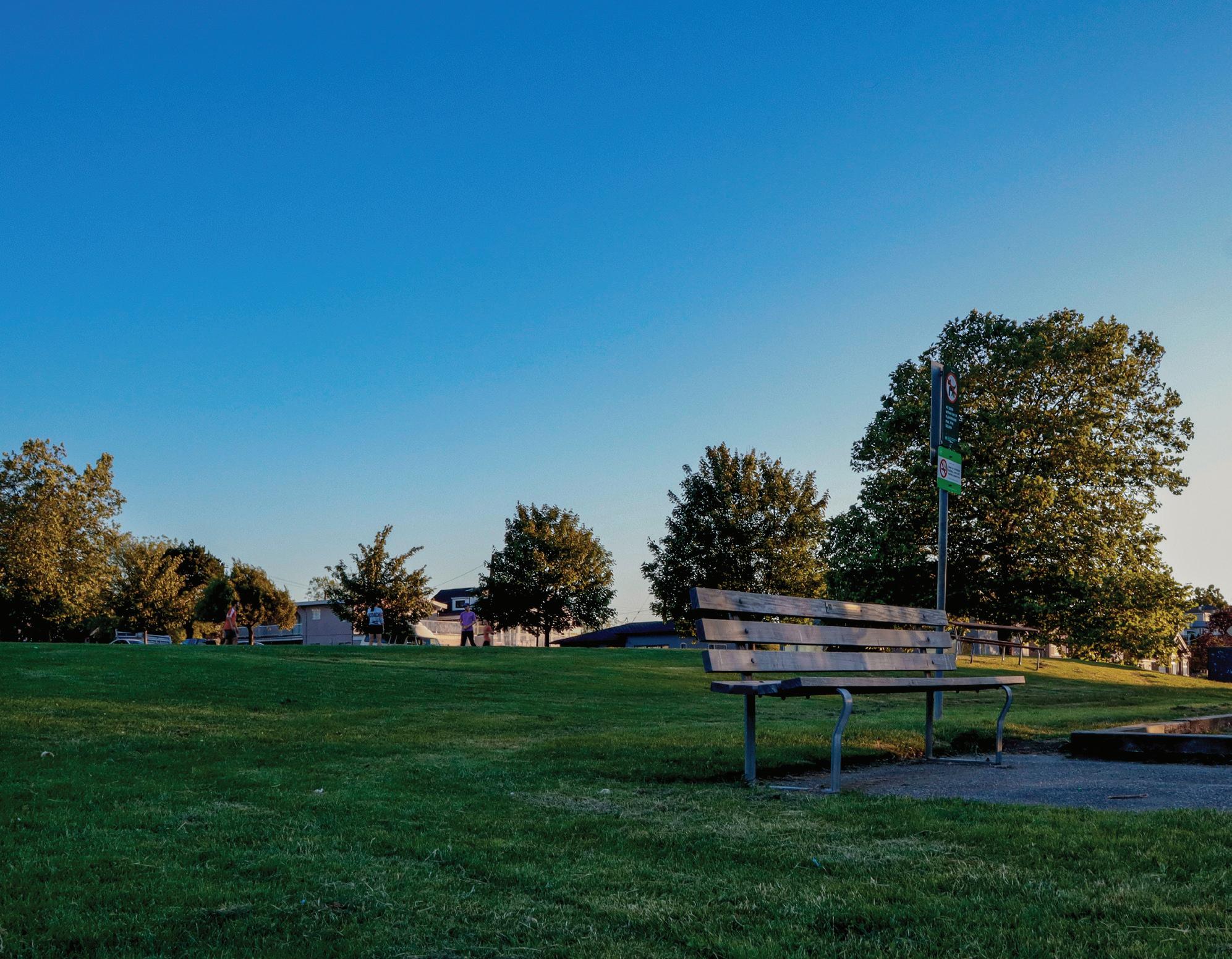
Surprise — Vancouver mayor Ken Sim has made yet another terrible decision. Last December, he decided his party holding the majority in City Council, the Park Board, and the School Board wasn’t enough control. Sim proposed an amendment to the Vancouver Charter that would dissolve the independent Park Board and put it under municipal control. Vancouver City Council then agreed to transition control from the Park Board to a council seeking pro ts over ecological value. This has terrible implications for the city’s greenspaces and those who appreciate them.
Vancouver is the only city in Canada with an elected park board, and it’s had exclusive authority over community spaces in Vancouver since 1953. The distinction from City Council is still important today as community greenspaces are growing rare in major cities. While it may seem like an oddity, it’s an important asset when considering the value of greenspace. The Park Board is essential for prioritizing the needs of community members. Previous executive director Sarah BlythGerszak remembers advocating for more youth skate parks when she was younger. During her time on the Board, she worked on projects like implementing electric vehicle chargers, gender-neutral bathrooms, and even “cellphone donations for seniors.” These were changes made without pro t in mind, which is what the Board is for.
Unsurprisingly, Sim’s position on the Park Board has not always been crystal clear. In June 2021, long before he was elected, Sim pledged to remove the Park Board if he gained the mayoral seat. A year later, the ABC Vancouver party introduced their Park Board candidates, which Sim claimed would help improve parks without needing a legislative change in Victoria. Less than 18 months later, Sim backtracked on this decision. We shouldn’t entrust the care of local parks to someone who was dishonest about their intentions.
Along with the dissolution of the decades-old Park Board, Sim proposed another dystopian idea — to sell the naming rights of public city spaces to corporations. He claimed this decision could earn the city up to $100 million from “wealthy people and organizations” if they were able to sell the rights to name buildings, parks, and other city assets. Not only does
that potentially limit the inclusion of Indigenous names in the future, but it also feels like a horrible consequence of latestage capitalism. While I’m all for the renaming of Stanley Park, I’d rather not have the new name be “Galen Weston’s Super Loblaws Park.”
This has terrible implications for the city’s greenspaces and those who appreciate them.
Even though the Park Board is still technically active as the Vancouver Charter has not yet been amended, the Vancouver Police Department (VPD) is already acting on Sim’s wishes. Along with an increased budget, VPD o cers are taking over beaches. O cers have been removing residents and tourists from the lands under Park Board jurisdiction, because apparently watching a beautiful sunset does not coincide with Sim’s “Vancouver is Fun” policy. Keep in mind that Sim was the former Chair of the VPD Board, and now he wants control over the city’s parks. This is an early example of what’s to come as the city encroaches on park jurisdiction, as the Board meant to resist this intrusion may soon cease to exist.
BC premier David Eby stated in March that the provincial government is committed to Sim’s transition plan — though a formal decision would have to wait until the next legislative session, after the October 19, 2024 election. The Vancouver Park Board is integral to the protection of Vancouver’s parks, beaches, and community spaces. Without the Board separating political interests from social and environmental ones, Sim’s controlling power trip could have drastic consequences for the natural spaces the city is known for.

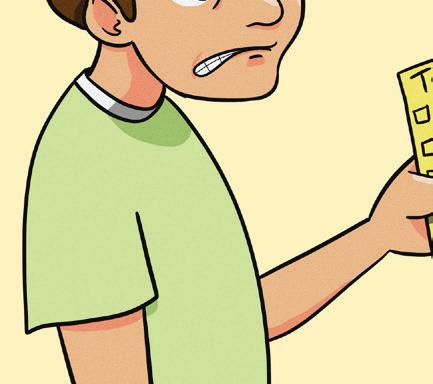


I love a nice, local stay-cation. There’s nothing better than being a tourist in your own town. What really gets me, though, is that no matter where I go I still have to pack. Who has time for that? Don’t even get me started on international adventures — packing for a quick trip to Vancouver Island, Skwelkwélt (Sun Peaks), or Skwi w (Whistler Mountain) is bad enough.
Firstly, since the weather changes in the blink of an eye it makes me question what I even need to pack. Do I pack a swimsuit to take a dip in the ocean, and a parka for the same trip just in case a sudden cold snap of blustery winds makes its debut on the shoreline? What about the mountains? Sure, they’re full of snow and cold in the winter, but that doesn’t mean I should forget sunscreen! Not to mention if I hit the slopes in the summer I better prepare for quite the heat rush and more mosquitoes than a swamp. Bug spray, packed away, anyone?
I need a separate suitcase for every season, which is applicable for every stay-cation. As a lifelong last-minute packer, I never know what kind of curveball is going to be thrown my way, so I pack it all, or not nearly enough to get through the rst day of my getaway. Who thought they’d need to rent a U-Haul just for all the excessive packing? I might as well bring everything but the kitchen sink!
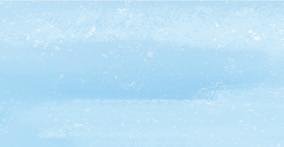
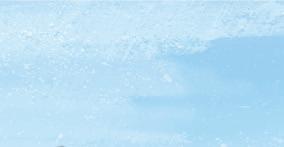
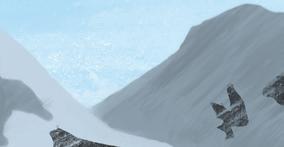



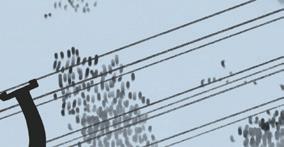

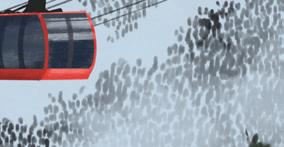
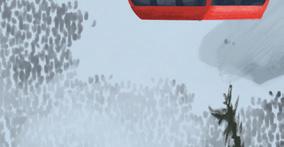
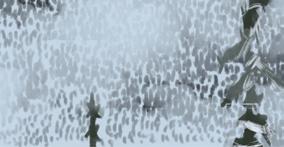
ILLUSTRATION:
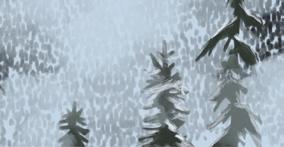

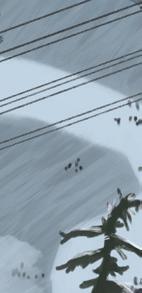

IZZY CHEUNG ARTS & CULTURE EDITOR
With work, school, and a variety of other commitments, who has the time to take a month-long trip to Europe? Even nding a week to chill on a tropical beach can be di cult, which is why setting aside a few days for local travel can do wonders for a mental reset. Chances are, if you’re looking for a short break mid-semester, you won’t be able to hop o the plane at LAX. A long weekend is much better suited to enjoying the natural beauty o ered by a quick stay on Clayoquot Sound.
Imagine this: you wake up, peel open the blinds, and enjoy a co ee on the balcony while taking in the majestic view of Cwítima/ Kacwítima (Lílwat language) or Skwikw (Sḵwxwú7mesh language), otherwise known as Whistler Mountain. You don’t even have to drive here — a 2–3 hour shuttle ride can land you in this ski town that rivals places like Ban and Aspen. Some of the best adventures can be held in our own backyard!
There’s no better place to visit than Salt Spring Island when you’re craving a quaint, cozy weekend getaway. SYOWT (Ganges Harbour) is home to most of the island’s restaurants, markets, and shops, while Tl’elhum (St. Mary Lake) and Ts’uween (Mount Tuam) can be found farther inland.
Regardless of where you go, travelling is always a fun experience. For less stress and more rest, keep your journeys close to home and visit a local gem!
With wildfires on the horizon, air quality concerns should be high

YASMIN HASSAN · STAFF WRITER
Every year, summers in BC get hotter and hotter. Remember the heat dome back in 2021 and its aftermath? Events like these are only expected to worsen with the steady warming of global temperatures. Recently, the government has been putting more emphasis on preparedness for expected extreme heat conditions, which includes providing free portable air conditioners for low-income households. Temperature is important, but what about air quality? I know I’m not the only one who can smell the smog that comes from the summer wild res, even when they’re not nearby. And it’s not just the smell that’s bothersome — wild re smoke can impact air quality thousands of kilometres away from the source. Air puri ers are one of the easiest ways to improve indoor air quality, and they should be made more accessible.
Prolonged exposure to harmful airborne pollutants, allergens, and particulate matter has been found to pose health risks. This is especially true for people who are already at risk of health complications, including disabled people, elderly people, and low-income folks. The US Environmental Protection Agency states that wild re smoke can cause “eye and respiratory tract irritation” as well as “reduced lung function, exacerbation of asthma and heart failure, and premature death.” Low-income communities also face higher risks of health issues due to poor building infrastructure and limited healthcare access. Since the smoke isn’t going anywhere, neither are its consequences.
What can be done to help? Air puri ers are one of the better ways to reduce adverse health e ects from poor air quality. Puri ers draw the air in a room through a lter and circulate it back out, trapping irritants. One study found that a test group of adults with asthma had improved health outcomes with air puri ers as opposed to the control group that received no lter. Air puri ers have also become more popular since the COVID-19 pandemic began. Poor air ventilation is a common issue in public spaces, with schools being a major concern in BC. With the continuing risk of Long COVID that disproportionately impacts vulnerable groups, air puri ers should be valued as essential devices. They add a necessary layer of protection against pathogens and contaminants, and should be used as annual wild res grow in size and frequency.
Puri ers usually come in three forms: ltered air, electrostatic, and UV light puri ers. There are generally seven kinds of lters, but the most common are high-e ciency particulate air (HEPA) lters. HEPA lters can “theoretically remove at least 99.97%
of dust, pollen, mold, bacteria, and any airborne particles with a size of 0.3 microns.” One study found HEPA lters decrease particulate matter content by 29–53% in the presence of an external source (smoke). They’ve also been found to work well in reducing the spread of SARS-CoV-2 airborne particles as long as they’re able to lter particles ranging from 0.1–1 microns. Be sure to check the rating of your HEPA lter before purchase, and opt for a higher grade like H13 or 14.
Since the smoke isn’t going anywhere, neither are its consequences.
The main problem is that air puri ers aren’t cheap, often costing at least $200 for a high quality one. Filters also need to be replaced at least once a year, and can be pricey at up to $50 each. They’re also typically only strong enough for single rooms, so you’ll need multiple if you want to lter every room in your home. Many people can’t a ord this equipment, which can lead to health complications. Having air puri ers in public spaces and people’s homes would greatly reduce the risk of exposure to airborne illnesses and pollutants, including smog from summer wild res. While it’s amazing that BC is providing low-income folks with air conditioners, they should consider doing the same with air puri ers — especially for those most at risk.
Air puri ers are important for those who are vulnerable, but their use helps everyone. The government should subsidize those bad boys, listen to climate consultants, and o er more education on air quality — especially if it concerns our health! While Dr. Bonnie Henry called on us to “stay alert” and educate ourselves about weather conditions, health information regarding climate change should be readily available rather than seen as a self-study option. We should value our respiratory health as much as we value cool temperatures in the summer. Air puri ers are proven to work, and should become a staple in our societies.


The 1988 blockbuster trade and the 1997 offer sheet that made headlines for NHL legends
As a documentary enjoyer and hockey enthusiast, I was intrigued by the ads I kept getting on my television about a new hockey-related documentary: Saving Sakic. Joe Sakic, former National Hockey League (NHL) legend and current president of hockey operations for the Colorado Avalanche was the subject — or his 1997 contract situation was.
Saving Sakic is not the only hockey documentary to focus on contractual obligations or executive office decisions, though it is a rarity in the already-scarce genre. Kings Ransom was an ESPN documentary made in 2009 that covered the impactful, game-changing trade, also known as a blockbuster trade, that sent Canadian hockey player Wayne Gretzky — from the Edmonton Oilers to the Los Angeles Kings.
As both documentaries covered the business side of hockey, I thought it would only be fitting to review them together, comparing and contrasting both the situations and the execution of these stories.
The 2009 ESPN documentary covers the August 9, 1988 trade that sent Ontario-born, hockey’s “the Great One,” Wayne Gretzky, from the Edmonton Oilers to the Los Angeles Kings. In the NHL, teams can trade players for other players or draft picks. There are some nuances and restrictions to them, but it’s a common occurrence. The deal included two players being sent south of the border with Gretzky, while Los Angeles sent back two players and $15 million USD — a larger amount than any current NHL player’s annual salary.
The film covers the success the Oilers had in the years leading up to the trade, where Gretzky had served as captain during their Stanley Cup wins in 1984, 1985, 1987, and 1988. Gretzky features heavily in it, along with former Oilers owner Peter Pocklington, former Kings owner Bruce McNall, and Gretzky’s wife, actress Janet Jones.
The trade was largely a business decision from Pocklington, who claims he was unable to afford a potential salary increase for Gretzky and continue to keep the team afloat in the small market of Edmonton. This film, however, focuses largely on the human effects of this transaction.
Pocklington faced death threats for his decision — even though the Oilers would win the Stanley Cup again without Gretzky in 1990. His wife, Jones, was branded the “Yoko Ono of the Oilers” for her perceived involvement in influencing Gretzky’s departure, and many took the trade as Gretzky abandoning Edmonton, and Canada as a whole.
Bringing Gretzky to Los Angeles turned a lot of attention to the often-forgotten American market, and paved the way for many southern teams in the future, including two more in California. Overall, I think the film provided a decent, in-depth look at the trade itself and the decision making surrounding it, though it left much to the imagination regarding the impact Gretzky’s arrival had on hockey in California, as aside from a short mention of the NHLers hailing from California today, there was no real analysis
of the post-trade effects. The story ended in the 1988–89 season, there is so more history to be explored. When it comes to blockbuster trades such as Gretzky’s, the trade itself and the context in which it happened is only part of the story, and this documentary lacks the legacy and rippling impact of the trade.
This recent documentary focuses on the 1997 offer sheet that almost sent Colorado’s Avalanche captain and Burnaby local, Joe Sakic, to the New York Rangers. The offer came only a year after the Avalanche had won the Stanley Cup — with Sakic earning the Conn Smythe Trophy for playoff MVP.
The Rangers had just lost their captain Mark Messier — he was under no contract and decided to sign a controversial deal with the Vancouver Canucks — so the team decided to offer Sakic a $21 million contract, with an additional signing bonus of $15 million. Rangers executives knew that the cashstrapped Avalanche owners, COMSAT, would be unable to match the gargantuan offer in the seven day timeframe they had to match the eastern team’s offer.
The Avalanche had an unlikely hero though — legendary actor Harrison Ford in the film Air Force One. Beacon Pictures, owned by COMSAT, partially produced the film, meaning some of the proceedings would go to the Avalanche ownership group. Air Force One was a box office success. With the film’s release predating the August 7 offer sheet, the Avalanche team obtained the funds to keep their captain and build a new arena for both the hockey team and the NBA’s Denver Nuggets. Sakic would go on to win the Stanley Cup with the Avalanche team in 2001 as a player, and in 2022 as an executive.
Overall, I enjoyed the documentary, though I feel like it focused more on the production of Air Force One and the conflicts in building a new arena for the then-struggling Nuggets rather than focusing on the supposed subject of the documentary. Sakic was hardly featured — I honestly think Ford had more screen time in the 48-minute film. The involvement of the more business-savvy side of hockey was interesting, though I feel like it brushed aside any meaningful discussion of hockey, outside of a summary of the Quebec Nordiques’ move to Colorado to become the Avalanche. It was a light-hearted documentary, and included Sakic’s career after 1997 — both on the ice and in the front office. I wish it had predominantly focused on the sport instead of the action film that may have aided it.
Both documentaries offer a good picture of the context in which the Gretzky trade and the Sakic offer sheet occured, however, without focus on the bigger picture — it feels lacking. Gretzky’s trade is considered to have changed the landscape of hockey in the US, however, the documentary doesn’t really touch on the rippling effects. On the other hand, Saving Sakic overly-focuses on the financial and operational side of hockey and the involvment of Harrison Ford in keeping Sakic on the Avalanche team rather than talking on the importance of Joe Sakic to Colorado’s hockey scene.
Written by Kaja Antic
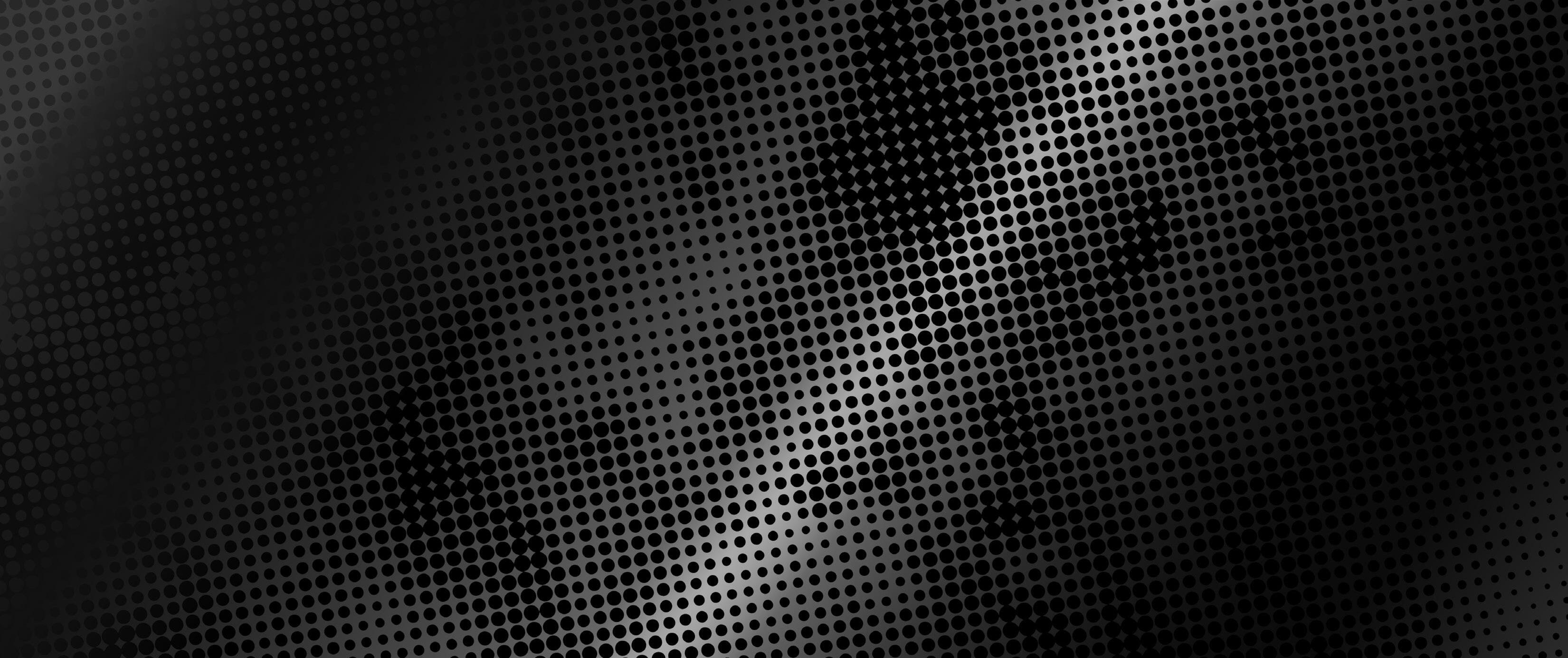

HAILEY MILLER · STAFF WRITER
Ashley Jones is an Indigenous artist whose body organ paintings are an ode to her love for science, and her Haida and Cree Métis roots. The Peak interviewed Jones to know more about her artistic journey, the meaning behind her art, and perspectives to the future. Jones is predominantly a self-taught artist, aside from learning to make dreamcatchers from her aunt. She said she had no guidance on how to draw, and rather, “just picked it up one day.” Her family was a source of support and inspiration to begin her artistic endeavours. “I started drawing different animals and I kind of found my very own unique patterns,” Jones stated. Traditionally, Haida paintings use a technique called formline — “the continuous swelling and tapering lines that unite design units” — to draw the animal outline. However, Jones opted for using the animal itself as a base for the outline.
Art has become a way for Jones to connect with her heritage: “I fell in love with my culture. I’ve learned how to do every other thing pretty much.” Besides weaving, Jones has also learned how to make rattles, traditionally used in dance rituals. Jones stated that learning these arts got her into “the Indigenous side” of her artwork and brought her back to her roots.
Talking about her painting “Heart of a Nation,” Jones recalls doing a supply run on Valentine’s Day where, after seeing various hearts, she was inspired and ran back home to get her new idea on paper. The painting carries a deep meaning, and she “did what felt right for the heart.” The painting has a wolf’s head and an orca’s tail, and the veins in it “represent the Tree of Life.”
Since then, Jones has stayed fascinated with organs and expanded her painting portfolio. Her “Ovaries” painting was inspired by the Me Too movement. “It very much represents the birth, and creation, and the sacred feminine.” Jones explained that in many Indigenous cultures, women “were the ones that brought the information and they were regarded as sacred.”
Jones’ artwork has touched individuals who have had heart transplants, hysterectomies, and infertility struggles. “I was bringing new artforms, new feelings out.” In her painting, “Eye,” the eyeball “represents the being able to see beauty and that we’re all the same, which is why the iris — the colour of the eye — is actually grey,” she said. “No matter who we are, no matter what we look like, no matter what, we are all exactly the same on the inside and that is what is important,” and that’s the message she hopes people
get from her artwork. Jones wants her audience to look at the eye as if it represents their own, regardless of colour, or how we see the world. Her most recent piece, “The Breasts” is meant for awareness of breast cancer. She’s also done paintings of kidneys, eyeballs, lungs, the brain, and liver, among others.
It was during a Powwow where someone noticed her work was a form of Haida art. “I had no clue,” Jones said, learning more about her Indigenous roots. “It was at the Powwows where I really met my community,” she said. “I’ve never felt more connected to my culture.” Jones notes that everyone is welcomed “with open arms.” These events helped Jones reconnect with her community, since her grandmother was forced to hide to protect her family from residential schools. As a result they lost almost all of their family connections. Jones and her mother continue learning more about their cultural traditions, which ties into her artwork. Jones says it was her father who convinced her to take up art in the first place.
At her first Powwow in 2018, she was invited to join SFU by a member of the Indigenous University Preparation Pathway program. She’s currently pursuing a degree in Indigenous Studies. Now, with about only five terms left, Jones said she fell in love with the program, which allowed her to connect with her community. She aims to apply the knowledge gained in medicine to advocate for Indigenous Peoples in healthcare. Jones mentioned how her mother, as well as other Indigenous Peoples, suffer from discrimination in the healthcare system. These experiences made her realise not only the need for doctors, but for allies in the system. “I do want to be a doctor once I graduate SFU,” having always been fascinated by medicine, she said, adding she hopes to create murals in hospitals one day.
Her art has influenced her love of science and medicine, and vice versa. “It’s really important that people see my art the way it is, and feel what it makes them feel,” she said. “I really would like to have my art in galleries, so I can have as many people see it as they want.
“If it brings even the smallest smile on a bad day, that gives me such joy that I was able to create that happiness.”
Aside from her paintings, Jones sells her work as prints for $20.

No no like, are on what Ashley
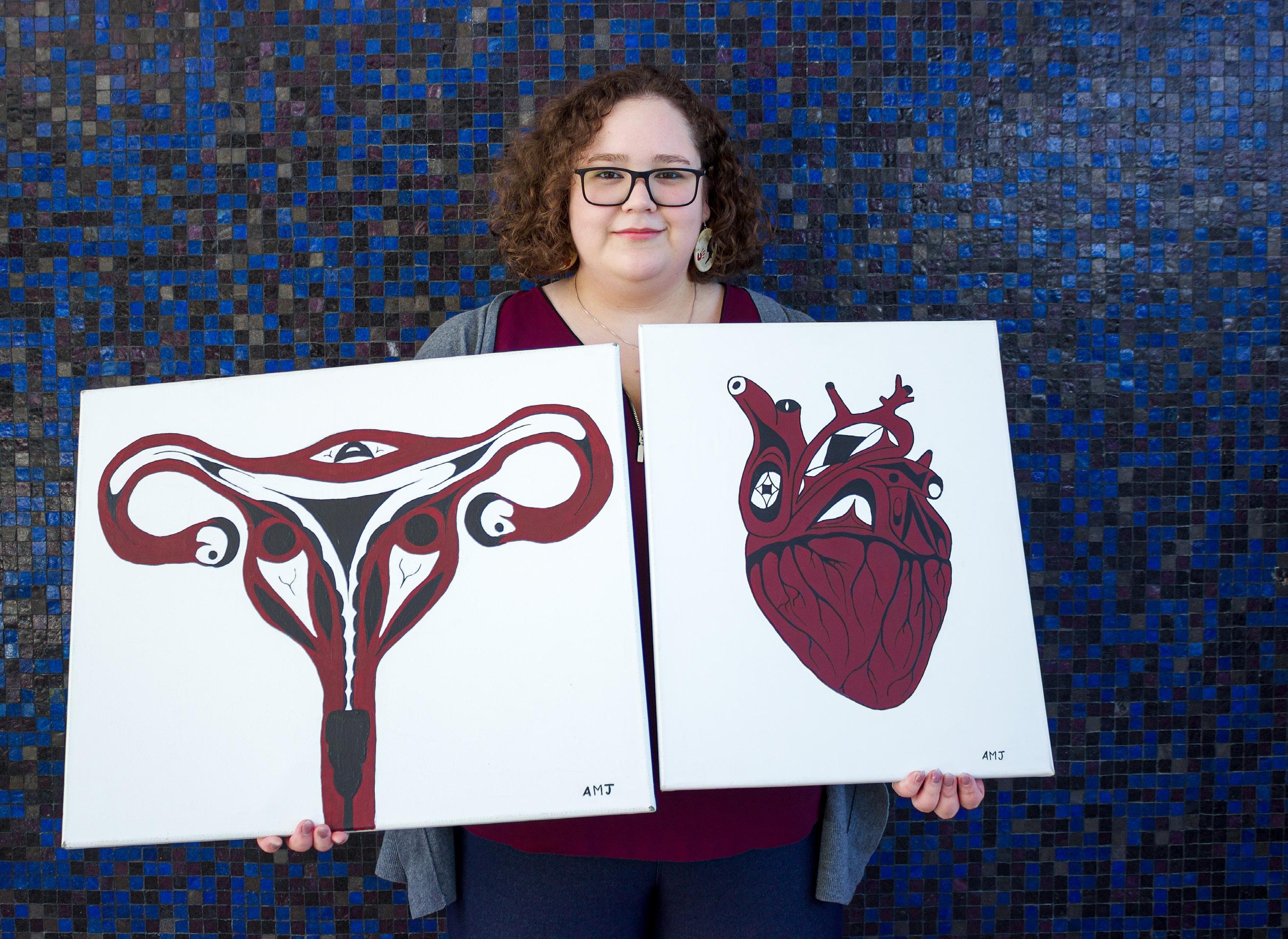
No matter who we are, no matter what we look like, no matter what, we are all exactly the same on the inside and that is what is important.
Ashley Jones
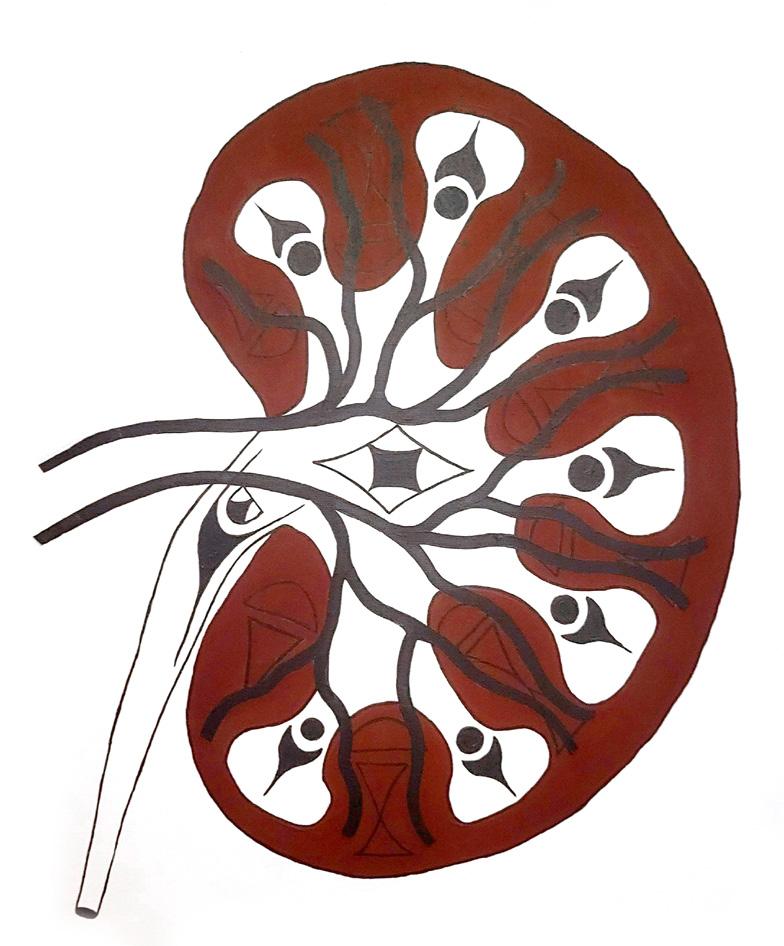

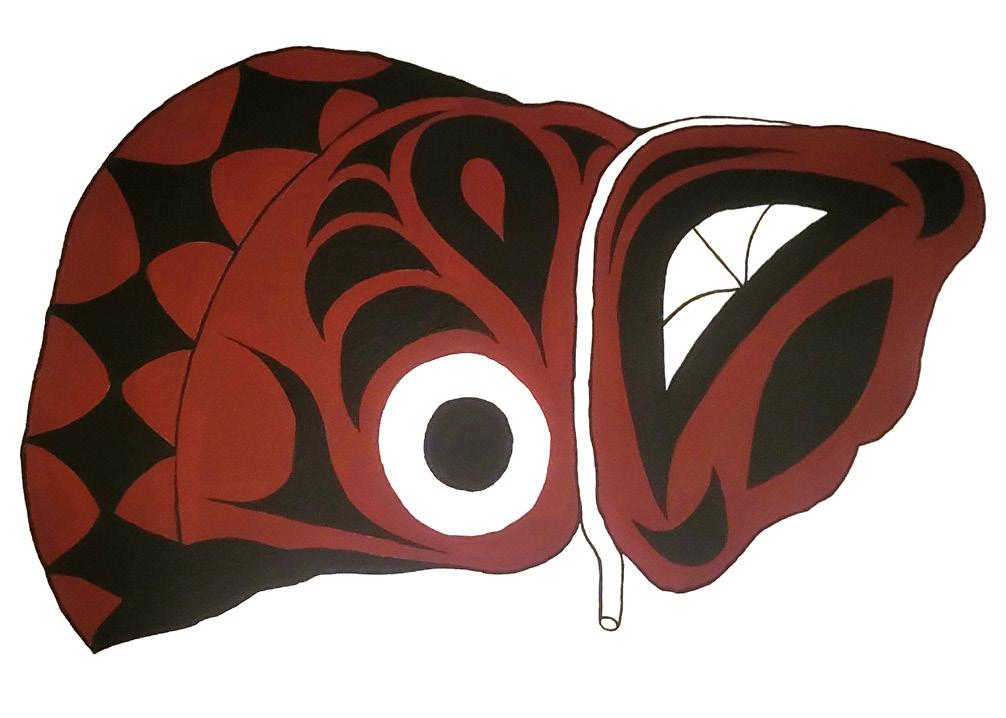
This event hosts local vendors, Vancouver-based musicians, and a free BBQ
AMRIT KAMAAL · PEAK ASSOCIATE
On June 9, one of Vancouver’s greatest community events, the Fair in the Square, kicked off. Best of all, it was absolutely free of charge! Visiting the event for the first time helped me re-experience the feeling of creating new connections — like I would in the children’s festival in my city. Although the fair has said goodbye for this summer, it’s never too late to add it to your bucket list for next year.
Located at Victory Square Park, Fair in the Square is hosted annually by the Central City Foundation and their partners at Vancouver Community College (VCC). This year, Collingwood Recreation Society paired up with them to co-host this event as a means of “connecting with our community, while celebrating the vibrancy and resilience of our inner city.” For nearly two decades, this community function has hosted over 3,000 attendees, inviting them in with free refreshments, activities, and the artisan market. The participants and volunteers all showed generosity to my friends and I by exchanging stories of their lives in Vancouver. As first-time fairgoers, this event radiated a sense of familiarity in me and drove me to learn about this event’s significance to other peoples’ childhoods. This year marked its 16 th annual instalment, which was packed with live music from talented singers.
Exploring a celebration of Italian culture and cuisine
AMRIT KAMAAL · PEAK ASSOCIATE
One of the most anticipated free summer events in the Lower Mainland, Italian Day on the Drive is a day of cultural fusion and culinary expertise. Since 2010, this event has signified the unity and revival of Italian Canadian history on Commercial Drive. This year’s festival occurred on June 9, during Italian Heritage Month, with the theme of “storia” (history or story). The theme highlights the importance of “keeping traditions and important values alive while bridging the past with the present.”
The history of this beloved festival emerged in the 1940s, when many Italians began immigrating to Vancouver for livelihood, with the majority choosing to reside in the Commercial Drive area. As they established their businesses, they began integrating parts of their Italian heritage into the community around them, from landscapes to traditions. Their street parades from the ‘60s led to the creation of the first Italian Mercato (Market) Day in the late ‘70s. These parades featured floats, stalls of food and other goods, and a way to celebrate and embrace their culture in their new home.

You could feel the alluring sense of community from a mile away, with loud, inviting party music and the savoury aroma of free BBQ. The lineup for food went around the block, with visitors making a mental note to come back for seconds. In the meantime, student volunteers flocked to each corner of the park, providing refreshments to beat the heat. People saved each other picnic tables and blankets, taking turns standing in line for food to share with one another. These wonderful eats were graciously prepared by the VCC Culinary Program!
We sat in a big crowd in the middle of the park, where we saw hundreds of festival-goers make connections with each other with big smiles. From our picnic blanket, we enjoyed live performances and musical shows that concluded in the audience begging for an encore. Local bands and singers that had the audience swaying along included alternative R&B artist Deocera; Wildflower, Women of Turtle Island Drum Group; and contemporary gospel hand-drummers, M’Girl. The energy that every performance had, although contrasting in sound and style, all gave off love for the craft and the
audience. The communal atmosphere shone through, with people showing off their best dance moves!
Many local businesses were present in the artisan market, displaying their talent and amazing products to the community. One of the vendors was the Enterprising Women Making Art, which features handmade pieces of art and jewellery. This business provides employment opportunities for all women, with the hope of “strengthening and fostering women’s full and equal participation in the community and economy.” My Sister’s Closet is another Vancouver fashion staple to check out, advocating for “zero-waste, eco-fashion, and the thrift movement.” This business offers deals on high quality clothing in an ecofriendly way, with their raised funds going to Battered Women’s Support Services.
When I was a child, I used to love going to the children’s fairs held in my local playground before they shut down. Coming to this festival helped me reconnect with that lost part of my childhood again, allowing me to feel welcome in the community once more.

While it initially ran from 1977 to 1985, more than thirty years later, many Italian Canadians wished to restore this cultural fusion festival. With the help of various businesses, such as Il Centro Italian Cultural Centre, the Commercial Drive Business Society, this wish was granted in the summer of 2010.
The Drive was filled with mouthwatering aromas from the surrounding food trucks, the festive atmosphere, and lively, classical tunes originating from all over Italy.
Hosted on the “Little Italy” of Vancouver, this year’s instalment of the lively street party extended over 14 blocks and welcomed over 300,000 attendees. The event began midday at the Main Drive Stage on 2nd avenue after the commencement ceremony, officially beginning the festivities. The Drive was filled with mouth-watering aromas from the surrounding food trucks, the festive atmosphere, and lively, classical tunes originating from all over Italy.
It was impossible to go even one step without thinking about devouring some gourmet Italian delicacies, like from Casereccio Foods. Festival goers showed their spirit by covering themselves in hats or clothing, and even the Italian flag painted on their faces. Each corner showcased a new exhibition of art or cultural expression, from talent and fashion shows to Italian musicians and DJs. Some even expressed their love of Italian food by entering the pasta eating competition.
The burlesque and drag showcase will feature disabled performers from across Turtle Island
If you’re looking for a show to celebrate Disability Pride Month, look no further than Glitter Crash, presented by Twisted Tassels. The burlesque and drag showcase will heat up the stage on July 13 at The Cultch’s Historic Theatre. Starring disabled performers from across Turtle Island, the showcase aims to “celebrate diversity, empowerment, and the beauty of inclusion.”
Twisted Tassels Productions is a local burlesque company that presents talent from marginalized communities. Oftentimes, “disability seems to go to the wayside,” even in some of the most inclusive shows. The Peak spoke to Twisted Tassels founder and producer All The Way Mae, who hopes that Glitter Crash can help “push the local performance arts community to recognize disability and include that in their efforts to diversify their own performances and productions.”
Glitter Crash is the first show of its kind in socalled Canada. Audience members will have to leave their preconceived notions about disability and performance arts at the door. Some of the
SNARE-DRUM NEO-SOUL
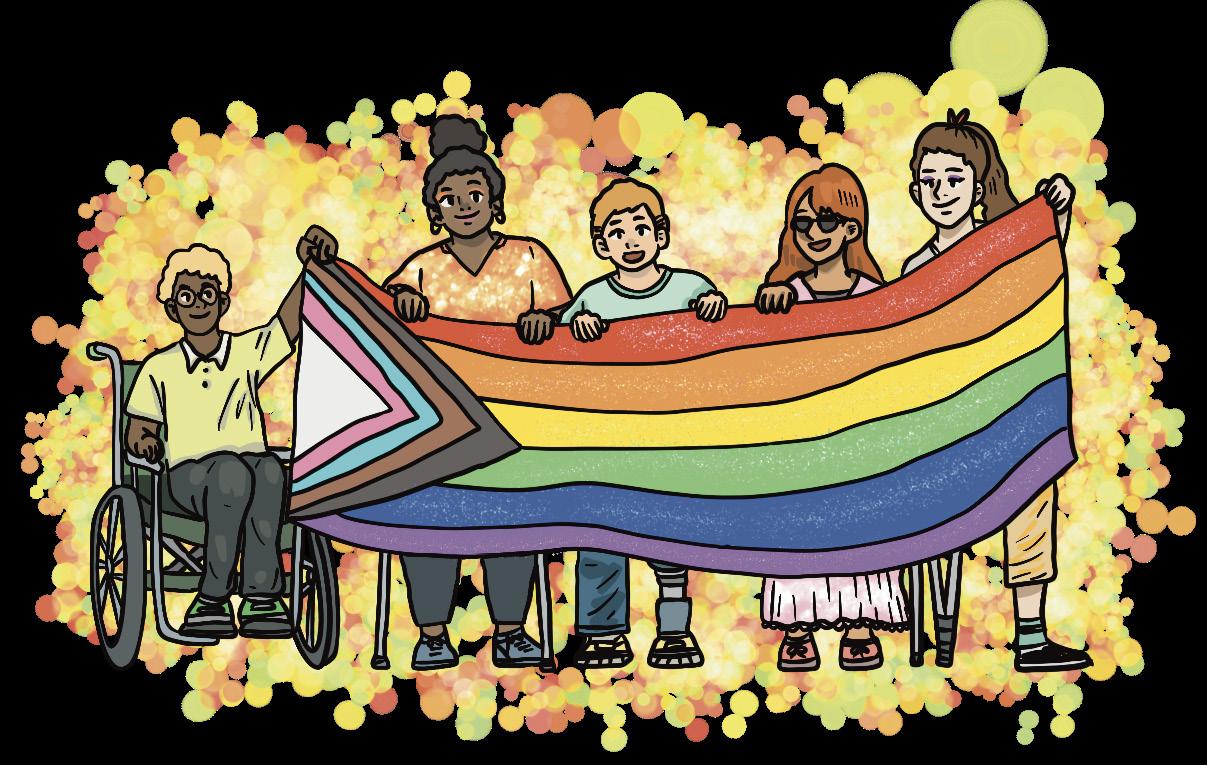
best disabled performers around will be displaying their talents in this groundbreaking showcase. This includes the winner of the 27 th annual San Francisco Drag King Contest, LOTUS BOY, the badass burlesque veteran Lady Drew Blood, and l ə k ̓ʷə ŋ ə nbased (colonially known as Victoria) mega babe Holly Shirt who’s been “putting the sex in dyslexia since August 2020.”
Disabled performers in drag and burlesque subverts some common misconceptions “that disabled folks don’t have sex, or aren’t interested in sex, or like sexuality is not a part of the disabled experience,” says All The Way Mae, who has been producing shows on and off for nearly two decades. While asexual disabled people do exist, disabled people are “not perpetual children that need to be infantilized or protected and aren’t able to have relationships or sex or own [their] own bodies,” they continued.
Burlesque and drag are outlets that provide a lot of agency to the “individual performers to really speak to their truth and showcase what it is they want to show,” All The Way Mae told The Peak Glitter Crash
The Saskatchewan artist looks forward to performing at Vancouver Folk Fest and opening for Lake Street Dive
HAILEY MILLER STAFF WRITER
Up-and-coming artist Katie Tupper’s effortless vocals and poetic songwriting present her as a force within the jazz and neo-soul scenes. Influenced by the likes of D’Angelo, Erykah Badu, Cleo Sol, and Norah Jones, Tupper found inspiration from the hip-hop and R&B imbued genre, neo-soul, when she was in high school.
I had the pleasure of speaking with Tupper ahead of her upcoming local shows. “Growing up I didn’t really listen to a ton of neo-soul,” she told The Peak. “My parents would take me to jazz concerts and would play Norah Jones.” It was because of these musical experiences with the genre that Tupper eventually “fell in love with it.”
Whether it’s a specific tone for a snare drum, figuring out a harmony, or “picking out things tonally,” Tupper is inspired by key components that are “iconically neo-soul,” though she considers her music as more alternative with jazz and soul influences. One of her studio rituals is listening to these genres to find inspiration before she begins the songwriting process, from which the influences “bleed into new songs.”
Tupper’s debut EP, Towards The End, was released in 2022. “When I put out my first EP, it was kind of like my first crack at it. I wasn’t really saying anything about myself,” she admitted. However, over time, Tupper noted that she had “gotten a little bit braver with each project” by imbuing her music with more elements of herself. Her 2023 EP, Where to Find Me, garnered her a nomination for Traditional R&B/Soul Recording of the Year at this year’s 2024 Juno Awards. She said, “I spoke a lot more about myself” and wanted to “reveal a lot more of my personality.”
Smooth like honey, Tupper’s songs are dripping with descriptive metaphors, effortless vocal runs, and melodies that
perfectly complement her soulful tones and rhythmic beats. Her latest single, “Need Nothing,” is full of poetic lyrics such as “Shiny metal open up / Pour the water from my cup” and “All the ways we move around / Satellite and solid ground.” The track encompasses a groovy rhythm and soft, lilting vocals that pull you in from the first beat, followed by a catchy chorus.
Smooth like honey, Tupper’s songs are dripping with descriptive metaphors, effortless vocal runs, and melodies that perfectly complement her soulful tones and rhythmic beats.
Tupper is currently recording an album and will be embarking on a summer tour across Canada. “I love playing Vancouver,” said Tupper. “It’s one of my favourite cities by far to play. Everyone’s so nice and receptive.” She looks forward to Vancouver Folk Fest, and playing the Orpheum for the first time. During our interview, it didn’t go unnoticed how grateful she is to be opening for the multi-faceted jazzy pop, country folk, and soul band Lake Street Dive.
On June 27 in Toronto, Tupper played Covers4Lovers: A Queer Cover Night alongside artists including The Beaches and Valley, to raise funds for Rainbow Railroad. She was excited to “be in a room full of community and be able to engage in pride” through the power of music.
will be no different as “a few performers are doing acts that are very specific to their own experiences of accepting their disability or the challenges with their disability.”
The passion with which All The Way Mae speaks about the show is enough to convince anyone that this is an event they should not miss. Glitter Crash rejects tokenism by putting disabled voices front and centre in all aspects of the production. There will be something for everyone as the numbers range “from sultry stripteases to defiant acts of political commentary.”
More information about each performer and what they bring to the show can be found on the Twisted Tassels Productions Facebook and Instagram. The importance of making spaces as accessible as possible is not just modelled on stage at Glitter Crash. Masks will be mandatory, and extra masks will be available at the venue.
Tickets range from $41.30 to $61.30 and are available at thecultch.com.
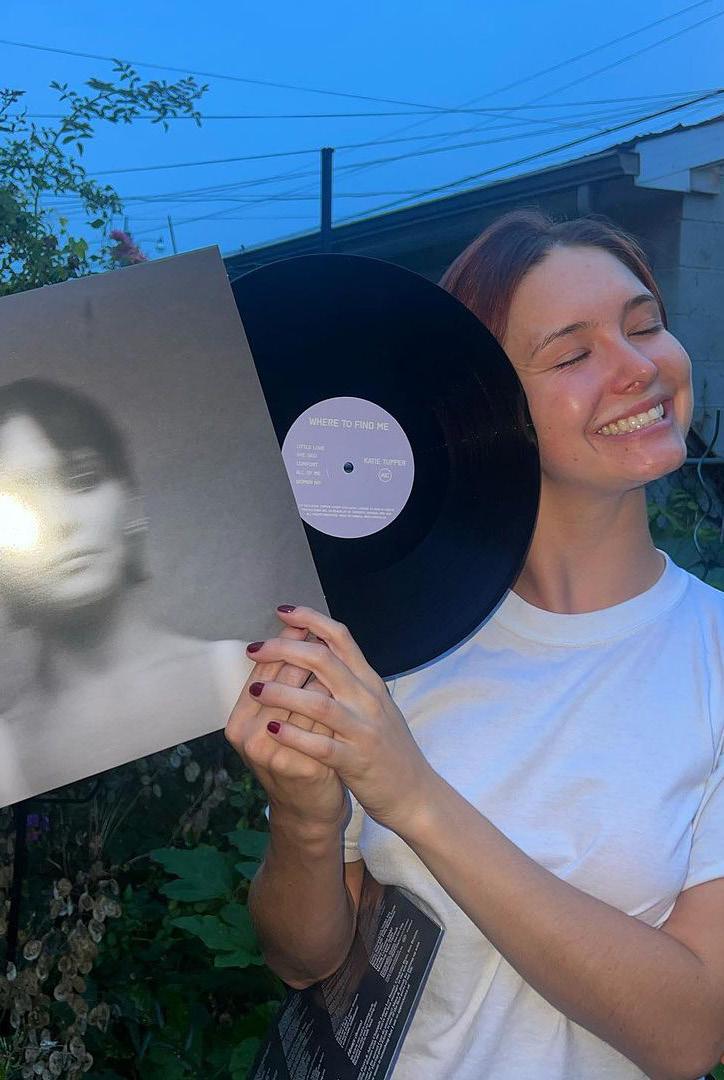
“Everytime I get to be in a space and watch people that really know what they’re doing do something they’re passionate about, I’m trying to sponge and absorb,” Tupper said of seeing how other musicians sustain themselves. “I just feel really lucky to get to have so many cool friends that are working in this space.” She’s grateful for sharing the stage with friends and opening for artists she admires.
“The reason why we’re doing this job is because it’s very impactful to our own humanity. That’s a very inspiring thing and just makes you want to keep making music so that you can continue to be a part of these spaces.”
Follow @KatieTupper on Instagram to keep up with her music.
Catch her at the Vancouver Folk Music Festival on July 21 from 9:40 p.m. to 10:40 p.m., or opening for Lake Street Dive on August 1.


ILLUSTRATION: ALIYA NOURLAN / THE PEAK










After years of relying on their tenants to pay their mortgage, local landlord Gil T. Leech has finally reached a point where the money they get from renting out their mouldy basement is pure profit.
“Everyone’s always thinking about tenant rights these days, but what about landlord rights?,” they asked in an interview with The Peak. “I should be allowed to have 15 tenants in a one-bedroom apartment. That’s covered under the First or Second Amendment, I’m pretty sure!”
Instead of looking up the differences between Canadian and American legislation, Leech likes to spend their time inventing illegal residential tenancy clauses. “My last tenants contacted the Residential Tenancy Branch (RTB) for dispute resolution because I told them that the fact that I could hear them typing on their laptop when I pressed my ear against the floor above their unit was a noise violation. I’m sure the tenants bribed the RTB because they ruled in their favour, which is absolute bullshit because why were they in their apartment at 1:00 p.m. on a Tuesday? They told me they don’t work from home, so it should be illegal for them to be there.”




(Normally, our publication avoids publishing quotes this long, but come on, you gotta admit this one was worth it).
Leech is currently in the process of purchasing extra homes to turn into illegal Airbnbs. “It’s not my fault other people can’t find housing. It’s way more lucrative to charge an arm and a leg per night, and the Constitution says I can make as much money as I want.”
Turns out that when you let people rant about their imaginary oppression, it’s hard to get them to shut up. Leech followed us down the street after our interview to say: “Another thing I’m mad about is that I can’t serve one-day eviction notices. Last week, some of my tenants called me IN THE MIDDLE OF THE NIGHT because a pipe burst in their unit. They were whining about ‘emergency repairs.’ What the fuck is that?! They have no respect for the person providing the roof above their head. Maybe if they were kinder to me and waited until a reasonable hour to contact me, I would’ve considered possibly supporting them by maybe Googling ‘plumber’ and sending them a screenshot of the results. But only if they tipped me, of course.”










When you can’t graduate on time because that one last course you need isn’t offered




































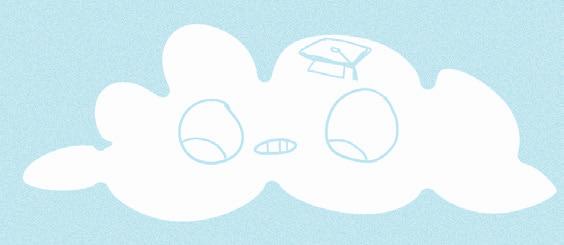





















Written by Hailey Miller


















Nothing’s more exhilarating than knowing you’re one course away from graduation. Just one more semester, and you’ll finally have grown from a little caterpillar studying in a field most people haven’t heard of to a beautiful butterfly with snazzy credentials no one will even remotely understand. The sweet victory of getting a flimsy piece of paper to denote your degree is just a sweaty handshake and a stumbly step across the stage away, with an incorrect name pronunciation as the cherry on top.




















greater pomp and circumstance than the graduation song itself.





You’ve mentally prepared and plotted the last pesky course you must take. All that remains of your degree requirements is one of the following: Graduation Station 400, Straight Outta SFU 400, Convocation Club 400, or Mastered It 800. You’re praying to registration that your computer screen doesn’t freeze.














Error: cannot register. This course is not available for the next three (3) semesters. Please try again next year.







Dread and dismay fill your day as you anxiously reload the page, hoping the issue will resolve itself. Suddenly, you can no longer smell course completion in the air.






Please choose one of the following for when your graduation is a year late, and you can’t invite any guests because audiences are so passé:

Go, graduate, go! Course registration time has opened, and you’re more excited than a raccoon digging through an overflowing trash can in the AQ. Eagerly, you scroll past the useless courses you’ve already forgotten about. Did you even take Honour Roll Know-It-All 400? For graduate’s sake! Are they really going to make you pay fees that even a loan can’t cover for some useless last course? You’ll have to set up a GoFundMe just to submit your graduation application!

















Trips and Falls at Convo Mall 400, Wrong Regalia Wearer 500, Scraped By in the Blink of an Eye 500, or Barely Passed 800.



Please note: Graduates must also enrol in Can’t Afford the Convocation Fee 400. Otherwise, their fashionably late, hot (graduation) date with bidding SFU adieu won’t go through.


Only one option is available on the list: Graduation Station 400. You smash your keyboard and chaotically click your mouse with






You sigh in disbelief. You waited over four years for this crappy course selection to really tie it all together and put a big, ugly, colour-clashing bow on top of a degree you won’t get for at least another year? That is, if the whole program doesn’t get cut first. Might as well forget it all now. Drop everything and move on! Who needs a degree anyway? Honour Roll Know-It-Alls are so last convocation.










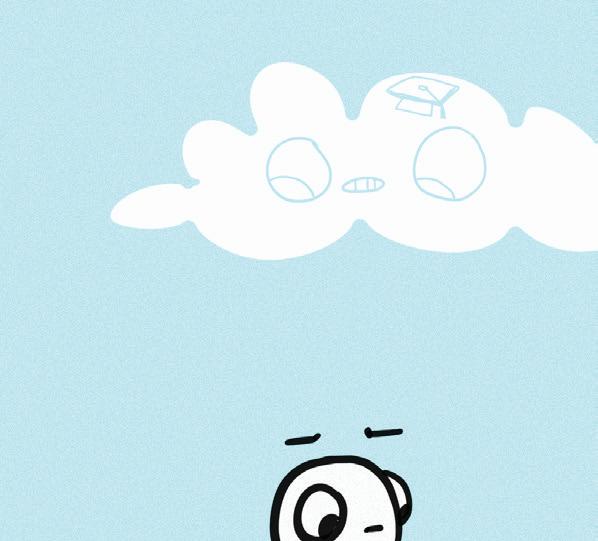


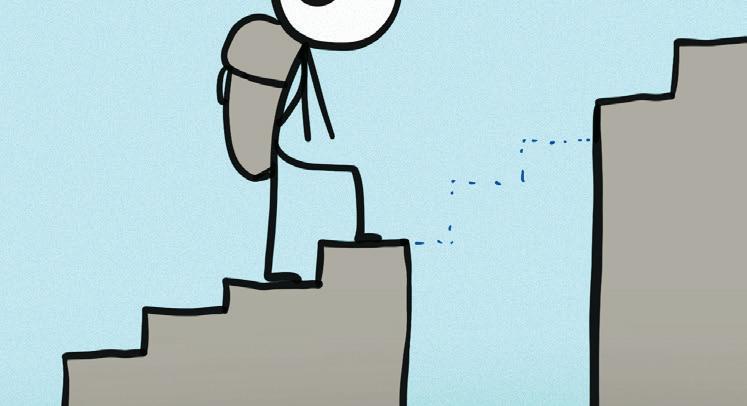

July 8–14
Sorry if this is gonna “ruin the tour”
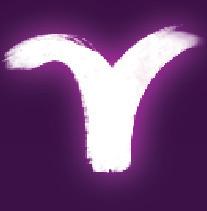
Aries March 21–April 19
If you’re an Aries man, yikes. You’re already prone to Chronic Mansplaining, which can be reputation-threatening if not caught early. To avoid a cosmic pummeling, be humbled publicly this week. If you’re an Aries nonman, this is your chance to do the humbling.
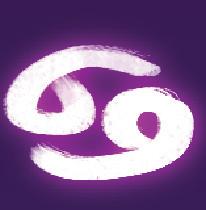
Cancer June 21–July 22
This week, avoid fur coats because people might mistake you for a doormat. And they would be right. So wipe the footprints o your face and remember that desperation is cringe. Never get played by someone who looks like one of the glyptodon from Ice Age.

Libra September 23–October 22
Summer’s here, and you think love is in the air, but that’s just pollen from the neighbour’s daisies. At least something’s getting some action, though. This week, give your habits a romcom protagonist glow-up because the only double D’s you have right now are Desperation and Dehydration. Your knight in shining armour would not make you wait like this, so book your own table at Pho 99.

December 22–January 19
You’re known as the “mature” friend, because you were the rst person in your friend group to get grey hair. No matter how much you scream that it’s just one and you only got it because organic chemistry midterm was brutal, you can’t escape the grandma allegations. Stop letting these insecure children age you before your time. This week, ditch the stamp collecting and do something to remind yourself of your youth, like hit the club or throw a raging kegger. After all, responsibility is only good in moderation.

Taurus
April 20–May 20
You’re the kind of person who always wears the same out t to campus like a cartoon character and makes plans only to regret leaving your dorm. This week, I advise eating vegetables and seeking out dark, moist environments because your goal is clearly to turn into an earthworm. Not even a caterpillar who will transform into a butter y — you’ll just become a slightly older worm.

Leo July 23–August 22
You know diamonds are a girl’s best friend, yet you’re still settling for granite acquaintances? Make it make sense. This week, dump that situationship. Regardless of the problem, just do that.

October 23–November 21
You’re not a rare breed, but you sure are a strange one. I know you bought one leather jacket and think you’re cool now, but I’ve got bad news for you — no one’s buying the edgy act. Every time you turn around, we see the Southside Serpents logo. This week, I recommend nding a new wardrobe aesthetic that isn’t “Riverdale wardrobe liquidation sale.”

January 20–February 18
Before you nally decide to escape to the woods and go o the grid once and for all, maybe chill for a second. No way are you surviving out there. While bears are better than men, they won’t stop to hear that opinion if they catch your honey-propolis shampoo. This week, try to nd a playlist that isn’t entirely Taylor Swift’s folklore.
SONYA JANESHEWSKI PEAK ASSOCIATE
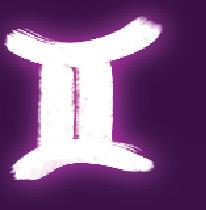
Gemini May 21–June 20
Are you constantly trying to be the “goofy” friend? Is your one personality trait that you’re “unserious?” Gemin-I don’t care. I’m surprised you can walk up the stairs to the AQ the way you’re using humour as a crutch. This week, put a cast on that fractured funny bone and heal by nding a personality.
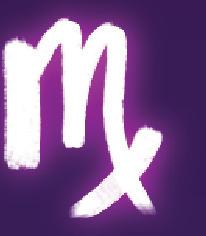
Virgo August 23–September 22
Virgos are some of the most judgemental people. Put that watchful eye to use this week and check yourself, or better yet, use it to kickstart your career. Your sharp tongue could chop vegetables, and all that arguing would make you a decent lawyer. Of course, there’s also the best career for judgemental people — writing student newspaper horoscopes.
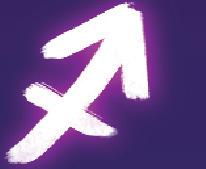
Sagittarius
November 22–December 21
If I have any advice for you this week, it’s to rst lower your voice a few decibels. Actually, lower everything: your expectations, your screen time, your shoulders . . . This week, don’t forget your lower body workouts. This way, when you hit the oor this weekend, you’ll have no problem getting low low low low low low low low. Thank me later.

February 19–March 20
Oh Pisces, head in the clouds and stars in your eyes. But you’d better bring yourself down to earth because you’re more hopeless than romantic. If you don’t put boundaries up fast, your dreams will turn into nightmares full of unachieved goals and waking up on grimy mattresses to someone who made you split the check at A&W. This week, challenge yourself by going a day without checking if your crush saw your Instagram story.


